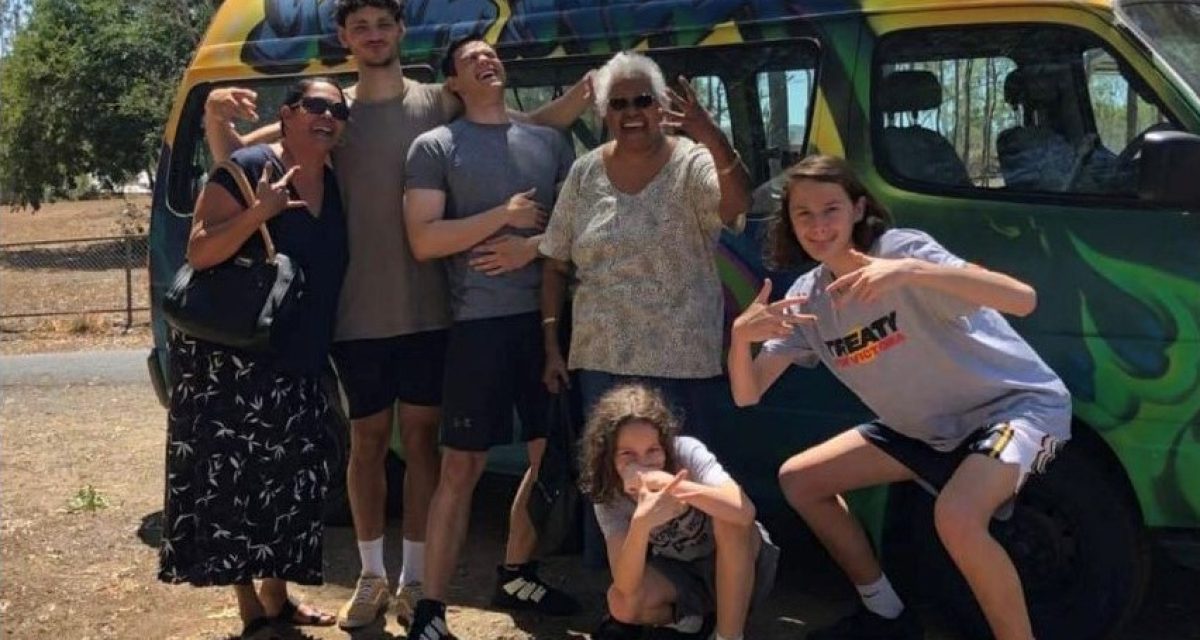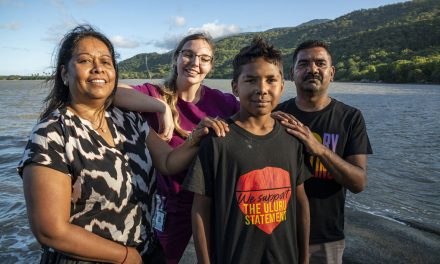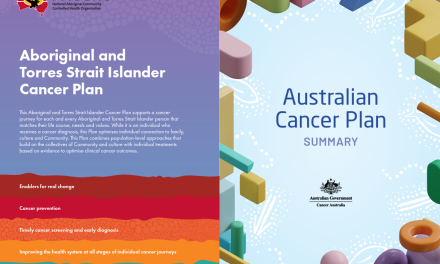Gangalu man Thomas Watson, hailing from Katherine in the Northern Territory, wanted to establish a connection with his ancestral Gangulu country and language – a link denied to his grandmother during her childhood.
In 2019, he embarked on his language journey during a family reunion in Gangulu country, central Queensland.
To his surprise, he discovered that the Gangulu was no longer spoken by the community.
“I thought that our language might have still been spoken by some of them and I could learn it all,” he said.
“So, I went to this family reunion and met my family and extended family, and realised that nobody knew anything about the language anymore, which was a big punch in the guts.”
Amidst his grief, his extensive search lead him on a long journey discovering that his language, along with many other native Queensland languages, had been recorded by a Swedish linguist, Nils Homler.
Mr Holmer, in the ’60s and ’70s, documented languages in the Gangulu region during his visits to Australia.

Mr Watson connected with the researcher’s son, Arthur, who had access to these records, tucked away in an attic, never being published to the world.
“I sent him a message, I was like ‘hey, Arthur, this is who I am, and this is my mob, and this is what I’m trying to do, do you know anything about these languages?'” he said.
“After a couple of email chains and things later, he sent me, 12 notebooks, fully scanned notebooks, and then the second one was 14 and six audio files as well.
“One of the people we have recorded, I found was my grandmother’s uncle, which is quite cool. So we’ve got our own blood in the audio.”
Within a week, Tom received an email from Arthur with scanned pages – the initial batch of around 2260 pages from Nils’ linguistic surveys in Southeastern Queensland.
“So, it ends up being over 2,660 pages worth of handwritten Aboriginal language from his work that nobody had seen since he’d written it.”
Now armed with this rediscovered language documentation, Mr Watson transitioned from his role in health to pursue a position as an Industry Fellow for Indigenous Language at the University of Melbourne.
“I didn’t know I was passionate about this, 2019 at the family reunion,” he said.
“I was already studying for the Osteopathy degree, but I used to use that language as a way to procrastinate my uni work because I obviously enjoyed it more than the course that I was doing.”
Engaged in a language revitalisation initiative, Mr Watson is crafting the inaugural Gangulu language dictionary.
Utilising Nyingarn software, designed for the transcription of often handwritten source documents, this approach facilitates searchable lexicon, breathing life back into languages and preserving them for present and future generations.
“Nyingarn has two, two components to it, one of them is the workspace, and the other one is the repository, so in the workspace is where, so somebody will upload a manuscript that they’ve got digitised,” he said.
“And the repository, effectively, makes the language accessible and searchable to the wider community, rather than just being held up in archives the whole time.”
“I feel like I’m in a race against time to get it all out of all of the mob for the old people before they pass away.”
Mr Watson plans to publish his work in 2024.
This article was originally published in the National Indigenous Times. To view the original article, click here.










